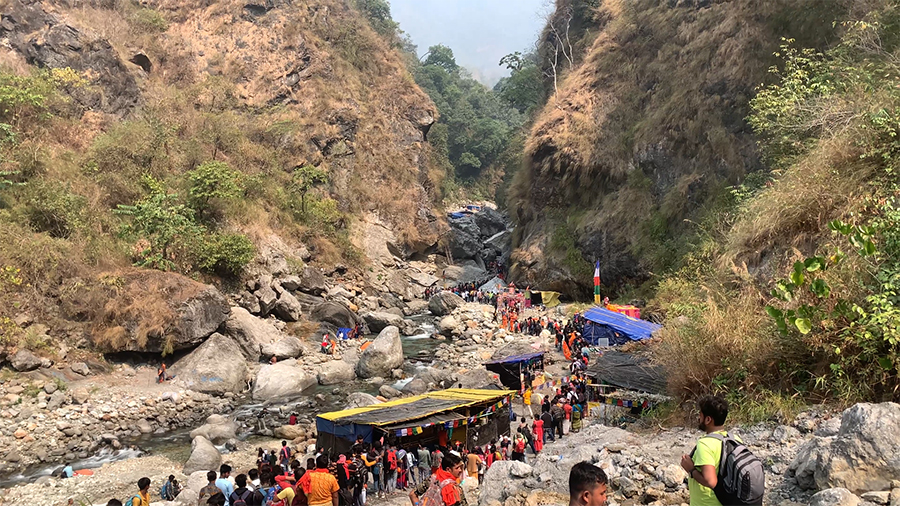
The lack of a proper route to Passa Tumdra Ami Ney in Chhukha is a major challenge. The sacred site that has been gaining popularity in recent years has no road connections from within the country thereby forcing devotees to travel via India. However, this issue will soon be addressed with the construction of a road from Shachaphu in Chhukha towards the site.
Today, people visiting the Tumdra Ami Ney have to travel through the Indian border from Phuentshogling. It is a two-hour drive.
After reaching Jaintey, a small Indian town, it is another five to six kilometres drive through the river bed. Then comes the base of the pilgrimage site from where people have to climb up the hill for about 40 minutes.
The site is also said to be accessible on foot from Shachaphu which is hours of walk into thick forest, so not many people choose to walk.
Given the sacredness and importance of the site, the Chhukha Dzongkhag and Phuentshogling Dungkhag administrations are all set to start road construction.
“Today, our devotees have to travel via India and it is really difficult. In order to ease this issue, we have submitted a proposal for road construction from within the country and we got the approval as well. So very soon, we will start the construction. The road will be from Jimi Chhu and Shachaphu in Darla Gewog,” said Karma Jurmi, Phuentshogling Dungpa.
Currently, people travelling to the site via India also face the burden of paying a fee of one thousand ngultrum as the road runs through the Buxa Tiger Reserve in India. Also, the site is not accessible in summer. There are also plans to enhance security and facilities at the site.
“With an increasing number of pilgrims, we also have to look at enhancing security as currently there are no walls and fences. We will have to construct a proper flood wall along the riverbank and also walls to secure the site,” said Phuentshogling Dungpa.
Meanwhile, the dungpa said that the dungkhag administration will also work on providing electricity and mobile networks to the pilgrimage site.
Because of the site’s religious connection to both Buddhism and Hinduism, thousands of Buddhist and Hindu faithful visit the site every year.
Kinley Dem
Edited by Kipchu










